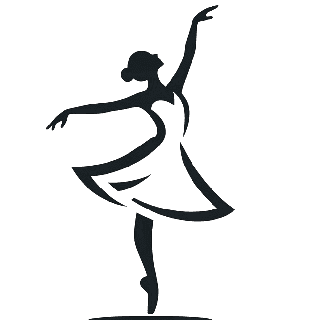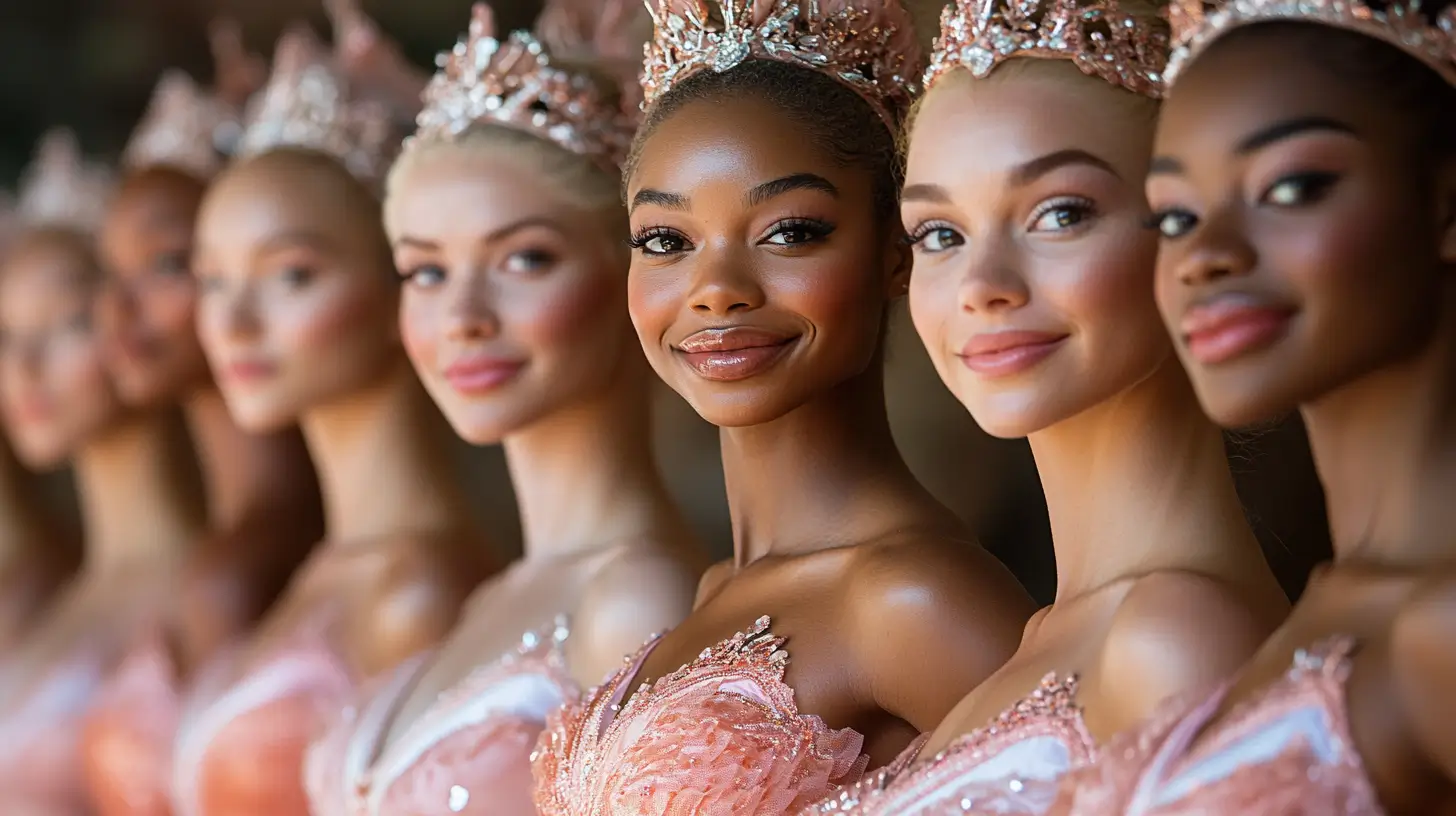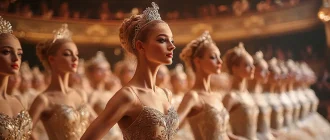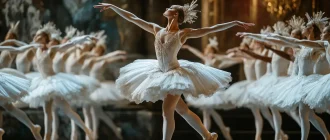Racial and ethnic diversity in elite ballet companies is evolving, though challenges persist. This article examines the state of diversity, the progress made, and the efforts of elite and other ballet companies to foster inclusivity. ️
Graceful Insights
- Arthur Mitchell’s legacy in founding the Dance Theatre of Harlem has been instrumental in promoting diversity within elite ballet companies and breaking barriers for Black dancers.
- Prominent ballet companies seek to enhance racial diversity through community engagement and educational outreach. Initiatives like Project Plié highlight the importance of representation.
- San Francisco Ballet participates in diversity initiatives, analyzes its workforce demographics, and addresses the representation of foreign-born dancers, alongside other major ballet companies.
- Artistic directors play a crucial role in shaping their companies’ diversity through hiring practices and repertoire choices. Yet, systemic biases and traditional views still pose significant challenges to fostering true inclusivity.
Art de Podcast
| Ballet Company | Country | Diversity Initiatives | Notable Diverse Dancers | Percentage of Dancers of Color |
|---|---|---|---|---|
| American Ballet Theatre (ABT) | USA | Project Plié (launched in 2013 to increase racial and ethnic representation) | Misty Copeland (Black), Calvin Royal III | 24.21% |
| Pacific Northwest Ballet | USA | Participation in The Equity Project to support racial equity in ballet | Amanda Morgan (Black), Kuu Sakuragi (Asian) | 53% |
| Boston Ballet | USA | Ongoing DEI initiatives, reimagining traditional ballets to promote inclusivity | Chyrstyn Fentroy (Black), Lia Cirio (Asian) | 29.63% |
| New York City Ballet (NYCB) | USA | Commitment to creating and sustaining a culture that values diversity, inclusion, and equity | Georgina Pazcoguin (Filipina), Amar Ramasar (Indian) | Data not specified |
| San Francisco Ballet | USA | Inclusion, Diversity, Equity, and Access (IDEA) initiatives | Yuan Yuan Tan (Chinese), Esteban Hernández (Mexican) | Data not specified |
| Dance Theatre of Harlem | USA | Founded to provide opportunities for Black dancers in classical ballet | Michaela DePrince (Sierra Leonean), Ingrid Silva (Brazilian) | Predominantly dancers of color |
| Royal Ballet | UK | Various initiatives to promote diversity and inclusion | Joseph Sissens (Black), Francesca Hayward (Mixed race) | Data not specified |
| Paris Opera Ballet | France | Efforts to diversify through scholarships and open auditions | Guillaume Diop (Black) | Data not specified |
| Australian Ballet | Australia | First Nations Ballet Scholarship, outreach programs | Ella Havelka (Aboriginal), Chengwu Guo (Chinese) | Data not specified |
| National Ballet of Canada | Canada | Equity, Diversity & Inclusion (EDI) Council | Siphesihle November (South African) | Data not specified |
Honoring Arthur Mitchell’s Legacy at Dance Theatre of Harlem
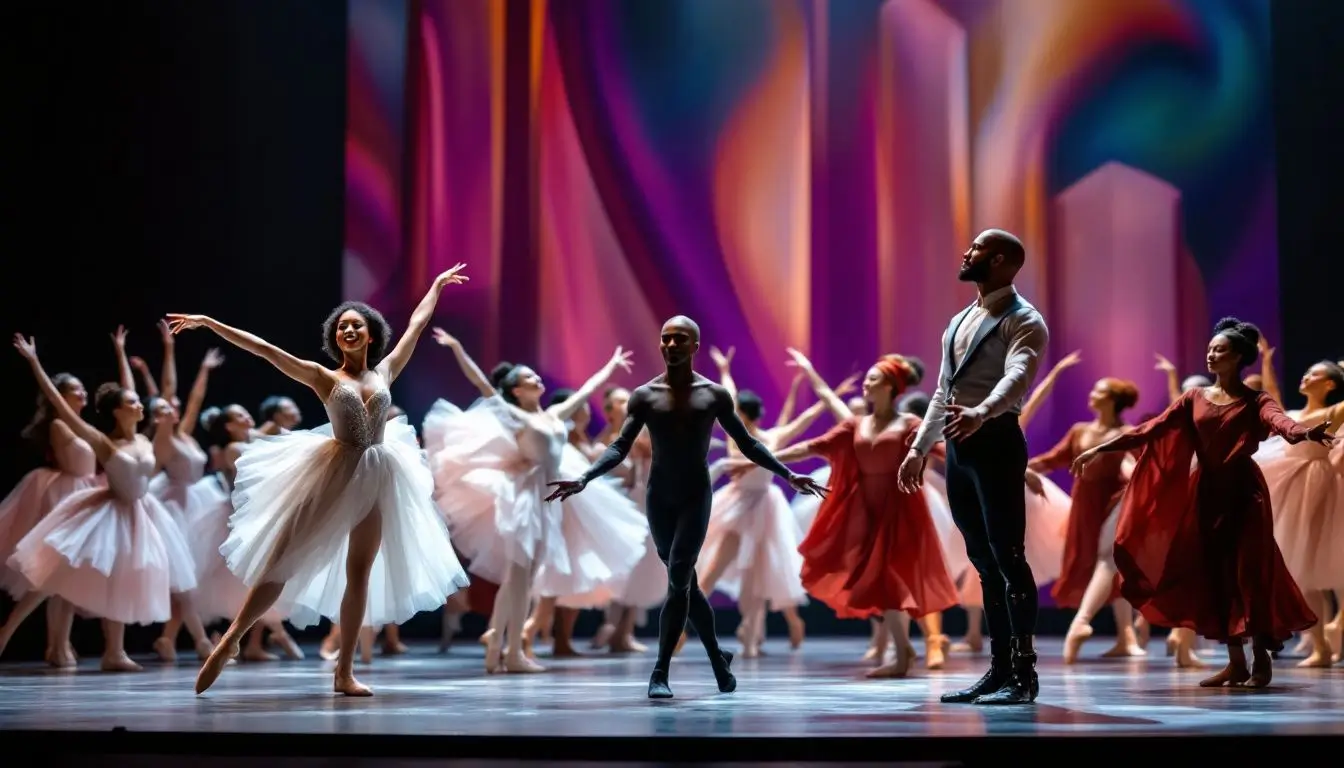
Arthur Mitchell’s name is synonymous with breaking barriers in the ballet world. Recognized for founding the Dance Theatre of Harlem, he provided a crucial space for Black dancers in classical ballet, an art form that had long excluded them. His work significantly influenced the visibility and acceptance of Black dancers in predominantly white ballet companies, making him a pivotal figure in the fight for diversity.
The Dance Theatre of Harlem, founded in 1969, was not just a company but a movement. It brought together talented Black dancers and showcased their skills on an international stage, challenging the preconceived notions of what ballet could be. Mitchell’s initiative was a direct response to the assassination of Dr. Martin Luther King Jr. and aimed to use ballet as a means of social change. His legacy continues to inspire initiatives to increase diversity in ballet companies worldwide.
Several ballet companies have adopted Mitchell’s principles to create more inclusive environments for dancers of color. Ballet Austin, for example, has adopted these principles to promote education within this community. His influence is evident in the ongoing efforts to diversify ballet, proving that one man’s vision can transform an entire art form.
As we delve deeper into the current landscape of diversity in ballet, Mitchell’s legacy is a powerful reminder of what can be achieved through dedication and vision.
Key Players Championing Diversity
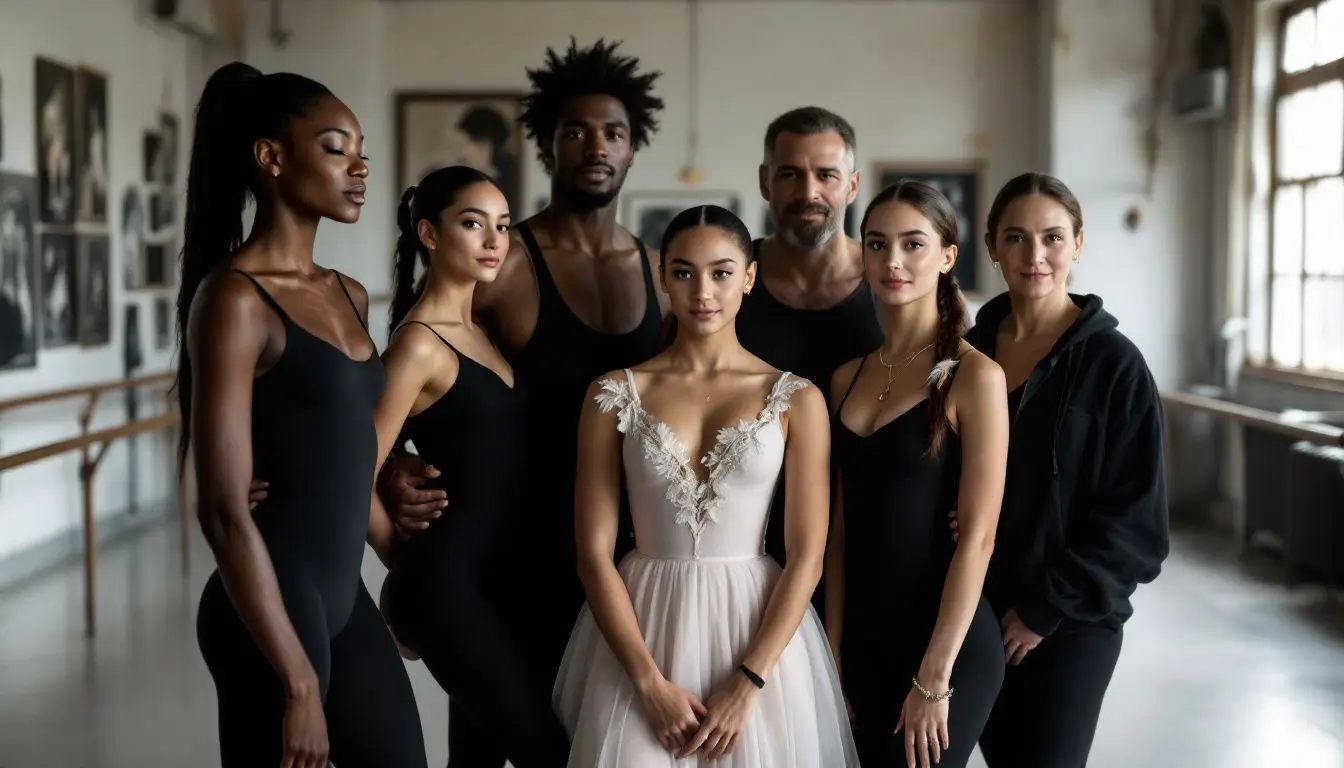
Prominent ballet companies, such as the American Ballet Theatre and the Dance Theatre of Harlem, are leading initiatives to increase the presence of Black dancers. These companies have taken significant steps to ensure their rosters reflect our diverse world. The American Ballet Theatre, for instance, has launched various programs to support dancers of color, recognizing the need for more diversity in ballet.
San Francisco Ballet has also increased diversity within its ranks, focusing on representing foreign-born dancers and addressing the lack of diversity in prominent ballet companies.
Atlanta Ballet is another key player committed to authentic change. Through various initiatives, it aims to represent its community’s racial diversity better.
Artistic directors are encouraged to adopt a community-centric approach, ensuring their companies engage with diverse populations through outreach and education. Collaborations with community organizations enable ballet companies to craft inclusive outreach initiatives, ensuring their rosters reflect the communities they serve. These efforts are crucial in promoting racial equity and fostering a more inclusive ballet world.
The Role of Artistic Directors
Artistic directors are key to shaping the diversity within their ballet companies. Their conscious hiring decisions are crucial in reflecting the community’s demographics and counteracting ballet’s elitist image. Hiring dancers from diverse backgrounds allows artistic directors to cultivate an art form that resonates with a wider audience.
However, artistic directors’ vision can also influence the type of repertoire presented, allowing works that reflect diverse narratives. Unfortunately, many ballet institutions still uphold traditional views that do not embrace diversity, affecting recruitment and perpetuating a culture that often excludes diverse talents.
To foster true inclusivity, artistic directors must challenge these institutional biases and champion diversity at every level of their companies. Collaboration among other ballet companies is also essential to collectively address these systemic issues and promote a more equitable representation of diverse populations on stage.
Representation Statistics
Representation statistics provide a sobering look at the current state of diversity in elite ballet companies. For the 2019-2020 season, Black dancers represented just 6.70% of all dancers in the top 25 US ballet companies plus the Dance Theatre of Harlem. Among female dancers, the percentage of Black dancers was even lower, at 5.61%.
Additionally, approximately 34.78% of dancers in elite ballet companies are born in another country, highlighting the significant impact of international talent on American ballet. The San Francisco Ballet, for instance, has a notable representation of foreign-born dancers, which reflects broader workforce demographics in prominent ballet companies.
Black Dancers in Elite Ballet Companies
The journey of Black dancers in elite ballet companies is marked by progress and ongoing challenges. In 2023, the Pacific Northwest Ballet reported that 20% of its dancers identified as Black, showcasing a significant step toward diversity. Similarly, the Boston Ballet reported that 11.11% of its dancers identified as Black in the same year.
Despite these positive steps, Black dancers continue to face systemic racism and barriers within the ballet world. The story of Fentroy, the only African American woman in the Boston Ballet, reflects the resilience required to navigate these challenges.
Her journey from the Dance Theatre of Harlem to her current role is a testament to the need for continued efforts to support and uplift Black dancers in elite ballet companies, including the New York City Ballet. Ballet Austin is also actively participating in initiatives like Project Plié to improve representation and outreach efforts within their community.
International Dancers’ Impact
International dancers have a profound impact on American ballet companies. Currently, 34.78% of dancers in these companies were born outside the United States. This influx of international talent enriches the ballet world, bringing diverse techniques and perspectives to American stages. The San Francisco Ballet, for instance, has a notable representation of foreign-born dancers, contributing to its varied and dynamic performances.
Japanese dancers, in particular, represent the highest number of non-US dancers in American ballet companies. Their presence in principal ranks is more common than expected, highlighting the significant contributions of foreign-born dancers to ballet’s artistic and cultural fabric.
The integration of international dancers enhances the quality of performances and promotes a more inclusive and global ballet community.
Barriers to Entry
The path to becoming a professional ballet dancer is fraught with barriers, particularly for dancers of color. Ballet training is notoriously expensive, contributing to economic disparities in access for aspiring dancers. The high costs of shoes, clothing, and pointe shoes present substantial financial obstacles; pointe shoes alone can cost around $75.
Systemic barriers such as colorism and racism further hinder black ballet dancers and brown dancers from receiving quality training in ballet. Many Black dancers face the additional challenge of finding pointe shoes that match their skin tone, often painting them to achieve a uniform look. The historical context of underrepresentation in ballet dates back to the 17th century, highlighting persistent discrimination that still affects dancers today. Other ballet companies must acknowledge their role in these systemic issues and work collectively to promote inclusivity and equitable representation on stage.
Institutional biases within ballet companies also significantly perpetuate these barriers. Some companies still practice offensive traditions like Blackface, and dancers of color are rarely cast in principal roles. These systemic issues, coupled with microaggressions experienced by dancers of color, create an environment that stifles diversity and hinders the career progression of talented individuals.
Initiatives for Change
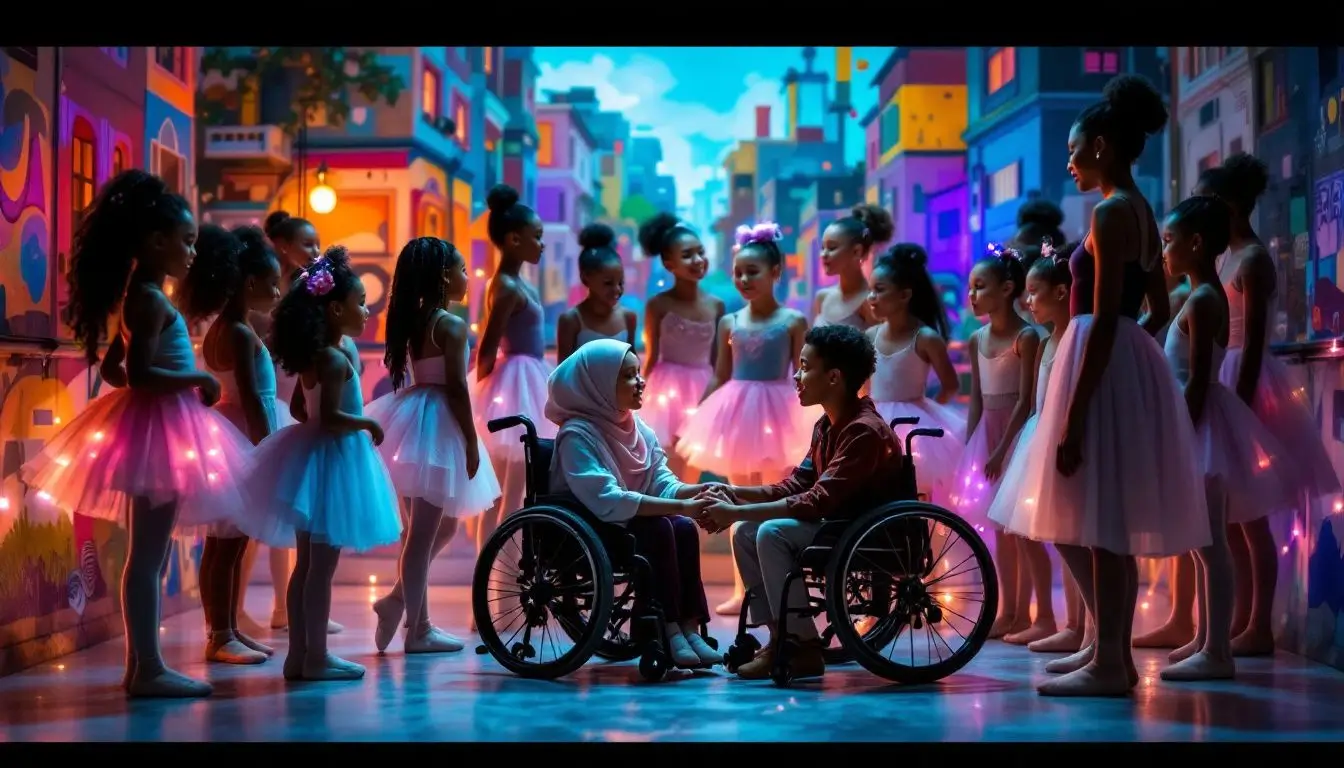
Recognizing the need for change, several initiatives have been launched to foster diversity in ballet. Project Plié, an outreach program by the American Ballet Theatre, aims to train diverse students and arts administrators and provide scholarships and support for dancers of color. This initiative is designed to enhance the chances of success for underrepresented communities in professional ballet. Ballet Austin is also participating in these diversity initiatives, collaborating with other major ballet companies to improve representation and outreach efforts within their communities.
The Equity Project is another significant initiative to improve racial equity in ballet. With participation from 21 organizations, including the Dance Theatre of Harlem and Dance/USA, the project aims to increase the representation of Black dancers in professional companies. Collaborative efforts like these signal a shift towards a more inclusive ballet world and demonstrate a commitment to nurturing talent from underrepresented communities.
Personal Stories from Dancers of Color
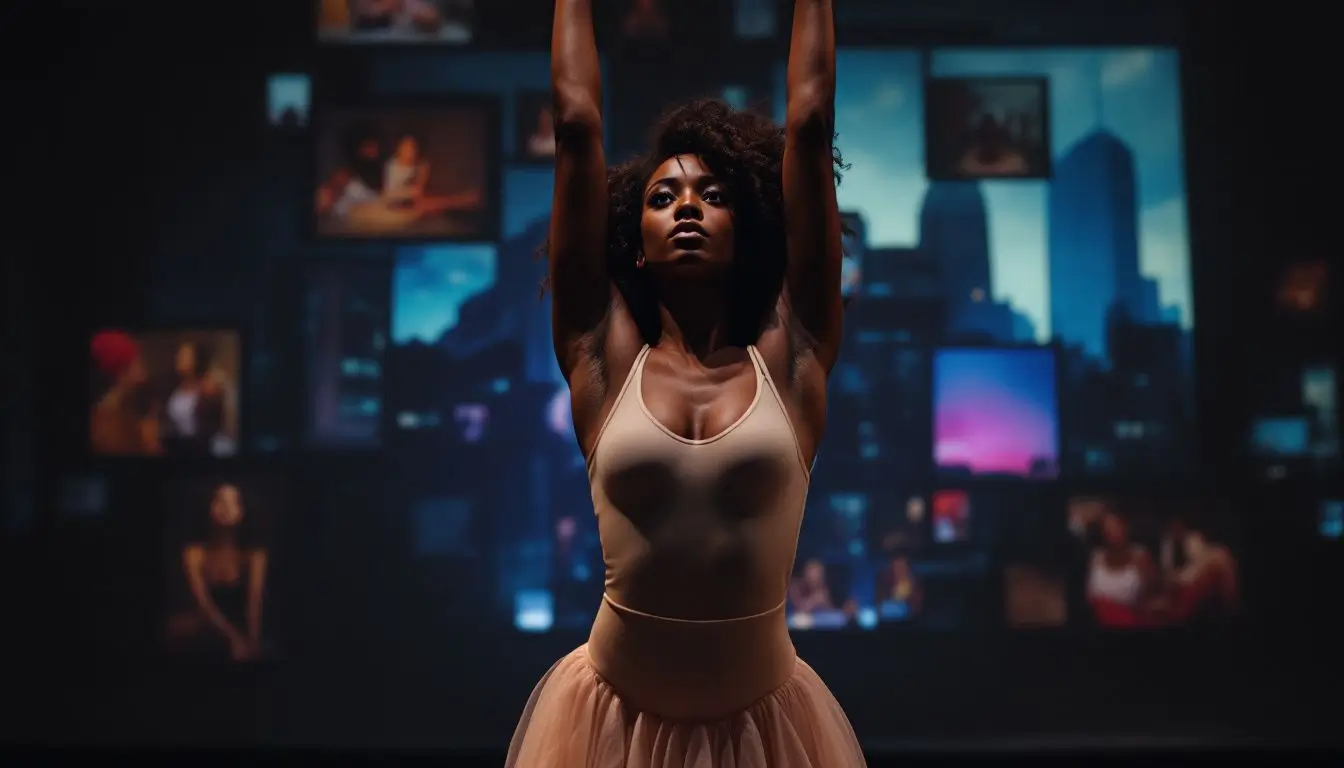
Personal stories from dancers of color provide a humanizing perspective on the challenges and triumphs within the ballet world. The lack of visible role models for these dancers often hinders their aspirations, making it crucial to share their experiences. For instance, Misty Copeland’s journey to becoming a principal dancer at the American Ballet Theatre has inspired countless young dancers of color to pursue their dreams despite the odds. San Francisco Ballet has also made efforts to support diverse dancers, highlighting the importance of inclusivity in the industry.
These stories highlight the resilience and determination required to succeed in an industry that historically excluded them. Sharing their experiences, dancers of color illuminate systemic issues within ballet and inspire the next generation of aspiring performers. Their narratives underscore the importance of representation and the need for continued efforts to create an inclusive ballet world.
The Importance of Representation in Ballet Schools
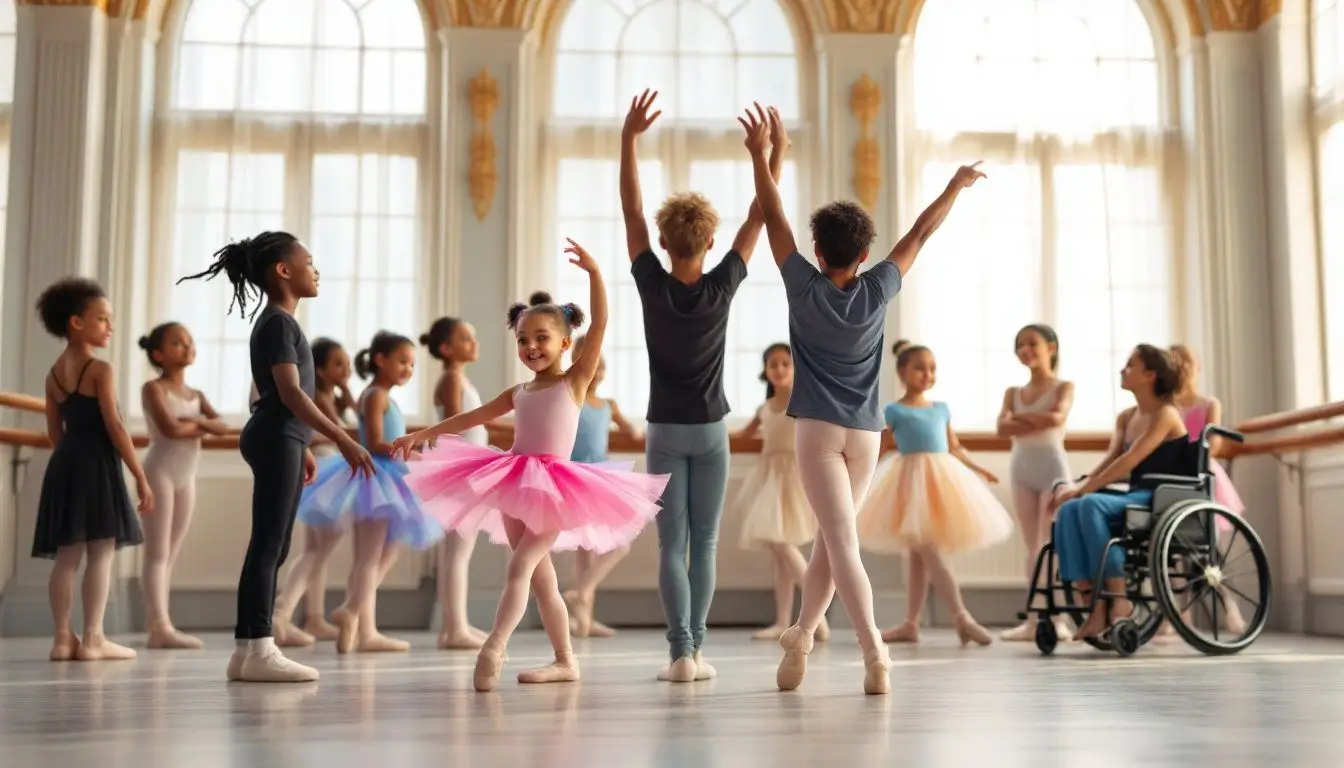
Representation in ballet schools is crucial for fostering an inclusive environment that reflects society’s demographic changes. Atlanta Ballet’s Centre for Dance Education has developed a program to train and support young dancers from diverse backgrounds who aspire to professional careers. Such initiatives are essential for attracting underrepresented students and creating a welcoming atmosphere that positively affects their performance and retention. Ballet Austin also participates in educational outreach programs that aim to foster diversity.
Diversity training programs help ballet teachers recognize the importance of representation in their teaching methods. Dance educators can foster a more inclusive culture by addressing racial issues and incorporating discussions about identity and self. The visibility of dancers from diverse backgrounds in ballet schools can inspire young students of color to pursue a career in ballet.
A commitment to diversity in ballet schools attracts students and families who value inclusivity, enriching the training environment. Integrating diverse content into dance curricula fosters a more inclusive environment and enables students to appreciate the various cultural contributions to dance. Engagement from younger generations indicates a demand for ballet that reflects contemporary experiences and diverse narratives.
Measuring Progress
Measuring progress in diversity initiatives is essential for driving informed decisions within ballet companies. The Dance Data Project (DDP) provides crucial metrics to analyze gender equity and diversity, allowing companies to track the effectiveness of their strategies. Monitoring data on leadership roles and works by diverse choreographers enables ballet companies to assess and improve the retention of marginalized artists. San Francisco Ballet, for instance, has been actively tracking diversity metrics and working to improve representation within its ranks.
Industry leaders are optimistic about a rapid transformation in ballet diversity within the next five years. Data analysis helps track progress and ensures accountability, encouraging ballet companies to continue their efforts toward a more inclusive future. This optimism is fueled by the increasing commitment of various organizations to foster diversity and equity in ballet.
Future Outlook
The future of diversity in ballet looks promising, with ongoing initiatives and commitments from various organizations paving the way for positive change. Ballet Memphis, for example, has vowed to give a voice to the voiceless and support Black dancers and staff in response to social media criticism. The Equity Project aims to bring about positive changes that reflect societal diversity, signaling a shift toward a more inclusive ballet world.
As racial diversity in the US continues to increase, ballet companies must adapt to the country’s changing demographics. Transforming their image from elite cultural institutions to relatable community representations ensures ballet companies remain relevant and inclusive. Collaboration and dialogue among other ballet companies are crucial in these collective efforts to embrace diversity and create equitable representation on stage.
The ongoing struggle for representation, underscored by dancers like Fentroy’s determination, inspires hope for a ballet world that embraces diversity.
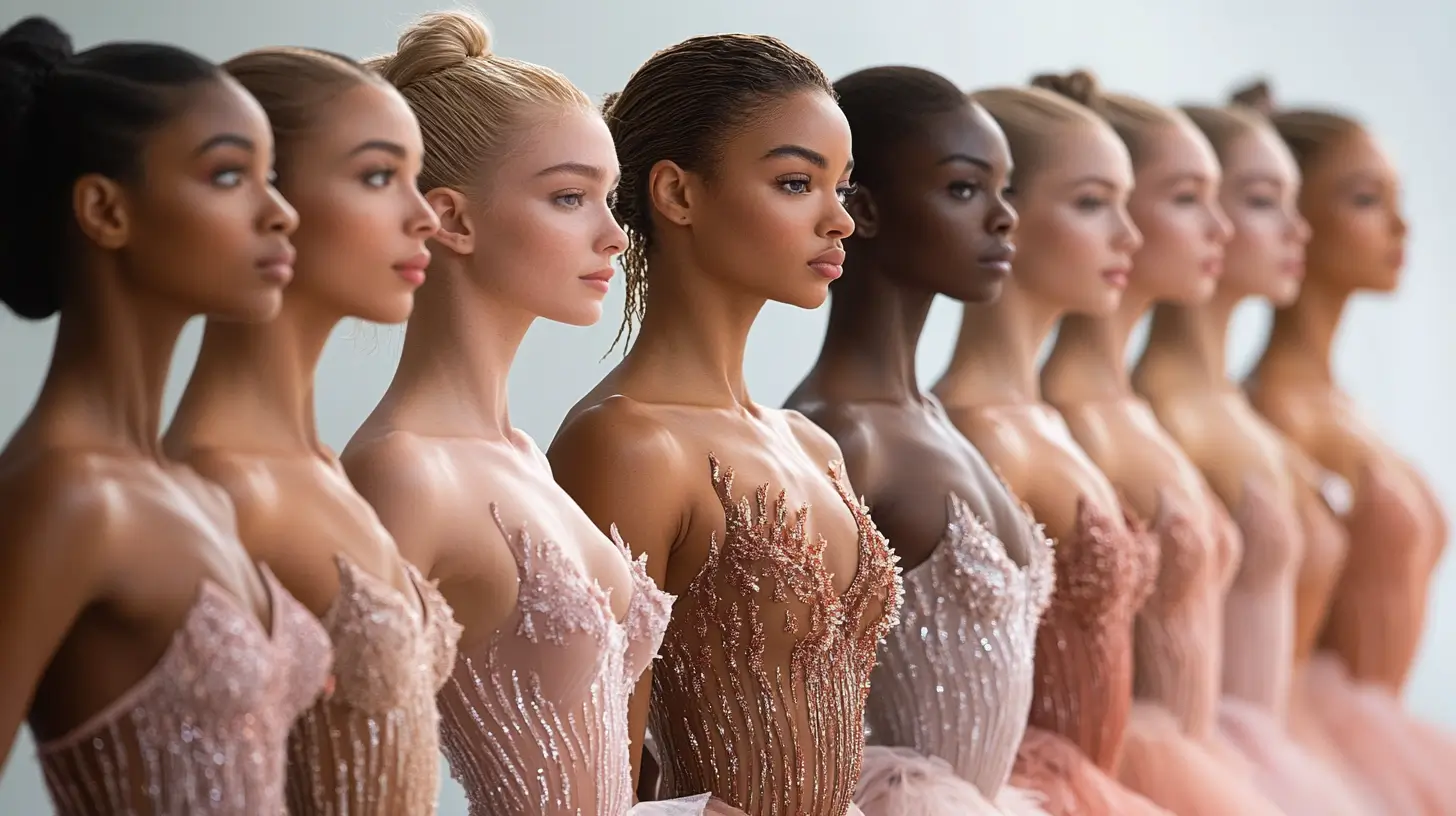
Resume
Diversity in elite ballet companies has come a long way, but the journey is far from over. Honoring Arthur Mitchell’s legacy and acknowledging the efforts of key players, such as the American Ballet Theatre, Dance Theatre of Harlem, and Atlanta Ballet, are essential steps toward a more inclusive ballet world. Artistic directors play a crucial role in this transformation by making conscious hiring decisions and challenging institutional biases. Ballet Austin, for instance, has significantly contributed to fostering diversity in ballet by participating in initiatives like Project Plié.
Representation statistics clearly show the current state and highlight the need for continued efforts. Black and international dancers face numerous barriers to entry, from financial constraints to systemic racism. However, initiatives like Project Plié and The Equity Project are making significant strides in fostering inclusivity. Personal stories from dancers of color underline the importance of visible role models and inspire the next generation. Representation in ballet schools is vital for nurturing young talent and creating an inclusive environment that reflects societal diversity. Measuring progress through data analysis ensures accountability and drives informed decisions, paving the way for a promising future.
As we look ahead, the commitment of various organizations and the increasing racial diversity in the US suggest a hopeful future for ballet. By evolving their image and embracing diversity, ballet companies can ensure their relevance and inclusivity. The dancers’ determination and the ballet community’s collective efforts inspire hope for a world where ballet truly reflects the diversity of our world.
FAQ
How did the Dance Theatre of Harlem pave the way for African-American ballet companies?
Founded in 1969 by Arthur Mitchell after the assassination of Martin Luther King Jr., Dance Theatre of Harlem proved that Black dancers could master the classical canon when given equal training and repertory, inspiring later companies devoted to racial equity in ballet.
What percentage of dancers in the largest US companies identify as Black today?
Recent roster analyses of the 26 highest-budget companies indicate that only 6.7 % of main-company dancers are Black, well below their roughly 12 % share of the US population, underscoring a persistent representation gap.
What is the “Missing 53,” and why does it matter?
Researchers calculated that the major U.S. companies would need to hire 53 additional Black dancers to achieve population-proportional representation; this shortfall, dubbed the “Missing 53,” now serves as a benchmark for measuring progress.
Which Black-led ballet companies are expanding diversity beyond New York?
Memphis-based Collage Dance Collective maintains a full-time Black ballet company and operates a 22,500-square-foot training center, showing how regional hubs can reshape the national talent pipeline.
How have skin-tone pointe shoes changed daily life for dancers of color?
Since 2018, offerings like Freed of London’s “Ballet Brown” and “Ballet Bronze,” developed with Ballet Black, have ended the need to “pancake” pink shoes with makeup, extending shoe life and giving dancers an unbroken line that matches their skin.
What scholarship and mentorship programs support young dancers of color in 2025?
Non-profits such as Brown Girls Do Ballet provide year-long tuition scholarships for girls aged 4-8 and summer-intensive awards for older students. At the same time, several regional schools waive tuition fees for BIPOC dancers, lowering financial barriers at critical training stages.
How diverse is leadership in elite ballet theatres?
Industry surveys show that, as of mid-2024, women hold roughly 30 % of artistic-director posts in the 50 largest US companies, leaving decision-making power—and, by extension, hiring and repertoire choices—concentrated in a narrow demographic.
Which tools help companies track and disclose diversity metrics?
Public dashboards such as Data Points and the Gender Equity Index compile race, nationality, and gender data across leading companies, giving stakeholders transparent benchmarks and spotlighting slow movers.
Why is mental health support especially urgent for dancers from marginalized backgrounds?
Surveys reveal that more than 70 % of dancers report depression, anxiety, or low self-esteem; dancers of color often face racial isolation and stereotype threat on top of the profession’s physical and financial pressures.
How are elite ballet theatres using audience-engagement strategies to advance equity?
Initiatives such as affordable ticket schemes, social-media storytelling, and collaborations with contemporary Black artists attract younger, more diverse audiences and reinforce incentives to diversify onstage talent.
What policy lessons come from Arts Council England’s diversity reporting?
Since 2016, all subsidized organizations have had to publish workforce data; the resulting reports show steady growth in ethnically diverse staff but stagnation in disability representation, proving that transparency can spur action yet also reveal lingering gaps.
How does intersectionality, including disability, shape discussions on workforce diversity?
Arts-management surveys indicate that white, non-disabled individuals still dominate leadership roles, highlighting how race, gender, and disability overlap to create compound barriers that diversity initiatives must address holistically.
Who was Michaela DePrince, and why did her 2024 death reverberate across the ballet world?
The Sierra Leone-born Dutch National Ballet soloist survived wartime orphanhood and vitiligo to become an international star; her passing at 29 reignited conversations about representation, resilience, and long-term support for Black ballerinas.
How do global competitions contribute to a more inclusive talent pipeline?
Youth America Grand Prix now draws dancers from more than 35 countries and offers scholarships to top schools worldwide, making high-level training more accessible to diverse talent.
What practical steps can companies take to reduce bias in auditions and hiring?
Best practices include blind initial video rounds, diverse selection panels, clearly published evaluation criteria, and funded apprenticeships—measures that broaden candidate pools and improve retention of under-represented dancers.
